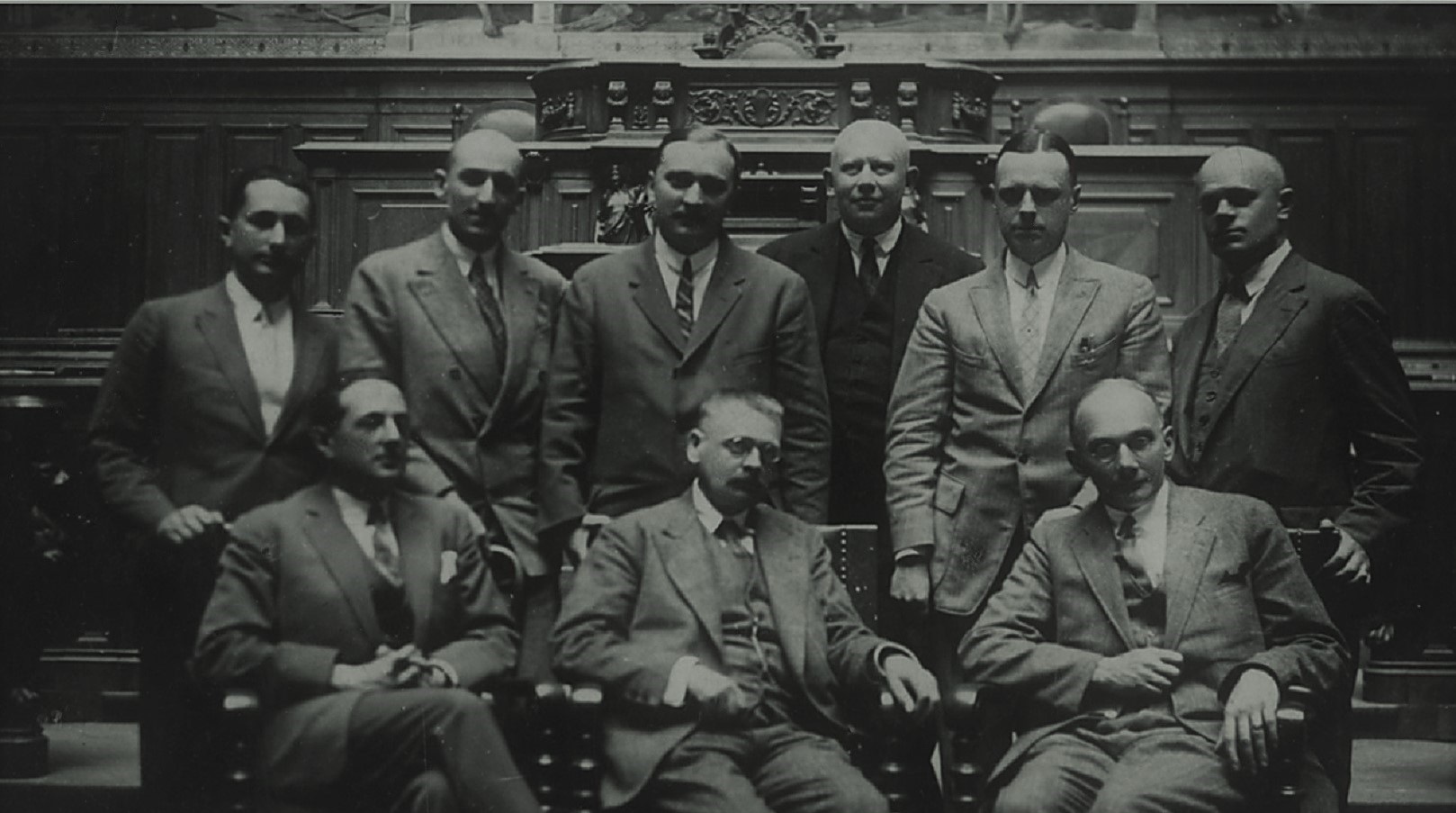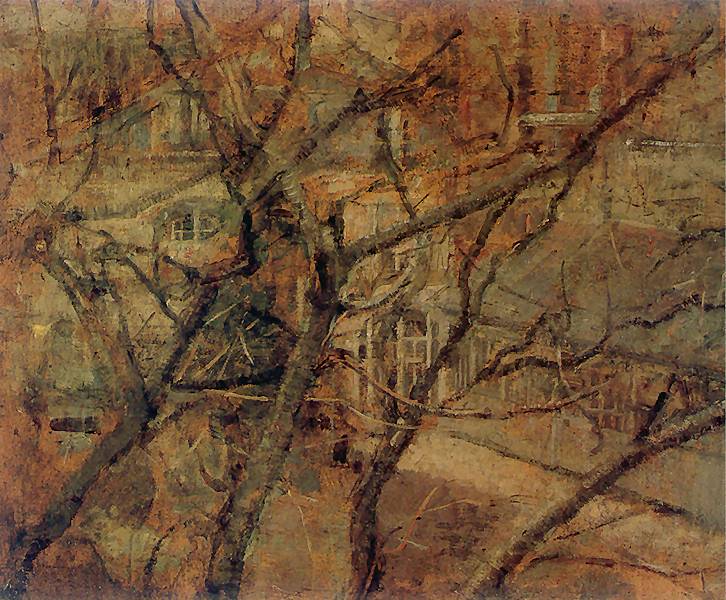“In fact, the story of Lwów mathematicians had little chances of happening, because this mathematical phenomenon brought together people who came from completely different social strata. There were twenty or twenty-odd at most. If it was not for mathematics, they wouldn’t have met. And they would not have created a school written about in encyclopedias around the world” – says Mariusz Urbanek, writer and journalist.
polishhistory: The Lwów school of mathematics is considered to be one of the most important occurrences in the history of Polish science. What led to the development of this phenomenon?
Mariusz Urbanek: Several elements contributed to this phenomenon. The extraordinary atmosphere of multicultural Lwów, which remained Poland’s most European city, although the country had not existed on any map for 123 years. When the Republic of Poland regained its independence after the First World War, it was a special moment in history. The battered ambitions of the capital of Galicia, which during the Second Republic of Poland became only a provincial city on the periphery, like Lutsk or Tarnopol, meant that there was a need to differentiate itself from Warsaw and Krakow. And then, of course, there was also the not quite definite element of chance – also known as coincidence – without which nothing would have happened. In fact, the story of Lwów mathematicians had little chances of happening, because this mathematical phenomenon brought together people who came from completely different social strata. There were twenty or twenty-odd at most, depending whom we include in this group. If we take the four most well known of them, we can already see their different backgrounds. Hugo Steinhaus came from a very wealthy Jewish family, Stefan Banach was the illegitimate son of an illiterate highlander and a soldier on leave, Stanisław Ulam was to become an attorney and inherit a prospering family law office, and Stanisław Mazur – was destined to work in the family pastry shop. If it was not for mathematics, they wouldn’t have met. And they would not have created a school written about in encyclopedias around the world.
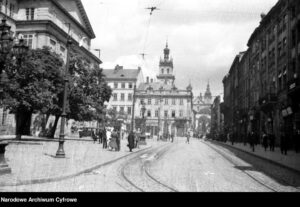
They created a mathematics school, what does it mean exactly?
This is one more element that contributed to this phenomenon: the fact they worked together. The Lwów school was recognized on a global scale for the achievements, however, these combined achievements were the result of gifted mathematicians working alone in their “ivory towers” and their individual contributions were priceless. The Lwów mathematicians truly worked together. Maybe this was what made the miracle possible – and I will use a mathematical heresy here – that in their case 2 plus 2 was 5, and not 4. Well, because they were geniuses.
It all started during the First World War. It was then, in Krakow, that two extraordinary people met…
It is a paradox, but the Lwów School of Mathematics was born in Planty Park in Krakow during the summer of 1916 in the middle of the Great War. Hugo Steinhaus, after receiving his doctorate in Göttingen, the Mecca of mathematics of that time, heard the words “Lebesgue integral” while walking down the Planty. This is a mathematical term for “insiders”, then still very fresh and little known, so the intrigued Steinhaus approached the bench by the promenade, where two young people were sitting: Otto Nikodym and Stefan Banach, who had studied for two years at the Faculty of Mechanical Engineering of the Lwów Polytechnic yet lacked the financial resources to continue. Steinhaus decided to help him. Soon, they began to meet and discuss mathematics. They published their first joint work before the end of the great war.
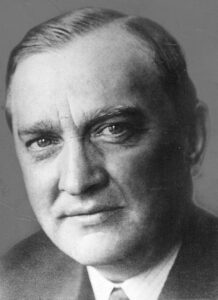
Hugo Steinhaus said later that Stefan Banach was the most important of all his mathematical discoveries.
There is, of course, a bit of coquetry here, because Steinhaus’ mathematical work is also impressive. But it is true that without Steinhaus, Banach’s star would not have shone as brightly as it did, if it had had a chance to shine at all. They were treated like master and apprentice, although there was only a five-year difference between them. It was Steinhaus who saw the diamond in Banach, which only needed to be properly polished to become the most beautiful gem. After the end of the war in 1919, he became a professor at the University of Lwów, and applied for a place for Banach at the Lwów Polytechnic, although they did not really want to accept an assistant there with his incomplete studies. Worse still, Banach preferred to sit in bars, where he was eager to debate mathematics, spewing out mathematical ideas like a geyser, but he was not so eager to write them down and publish them. However, Steinhaus insisted and Banach got the job.
In order for Banach to obtain a doctorate at the Jan Kazimierz University in Lwów, he needed to think of a trick.
I call it the conspiracy of professors, and I have the impression that it could not happen today. At the urging of Steinhaus, a group of scholars nevertheless decided to conduct Banach’s doctoral dissertation, since he himself was not eager to do so. In addition, it was supposed to be a doctorate even though the recalcitrant genius did not complete his studies – they were certainly not able to force it on him. The Dean of the Faculty of Mathematics of the Lwów University of Technology, Prof. Antoni Łomnicki, appointed an assistant whose task was to accompany Banach during these mathematical sessions in cafes, bars or even a beer hall at the railway station, which was open 24 hours a day, and write down the statements he made. These notes, arranged with Banach’s participation, in 1920 became the basis of his doctoral dissertation.
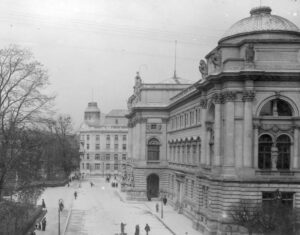
But a doctoral dissertation still needs to be defended.
And that was the second point of the professors’ conspiracy because Banach also was not able to publicly defend his doctoral thesis. Until one day the dean called him again and said that there were some gentlemen from Warsaw who would like to discuss some mathematical issues with the doctoral student. Banach never refused a discussion about mathematics. And this is how his work was defended. Then it went very quickly. After two years of habilitation, a professorship came in 1927 and then increasing fame, first in Europe, and also in the world. But he never finished his studies. Anyway, he is not one of the scholars whose output contributed to the legend of the Lwów School of Mathematics. Apparently, Stanisław Mazur was even more reluctant to publish his works, although it seemed impossible to be so averse to writing and publishing.
Despite his enormous achievements, Banach was not interested in advancing his academic career as we understand it today, and titles did not interest him at all.
Banach never became a professor in the sense and style of the time. Lwów was outraged when he went out to the street in a short-sleeved shirt, when the professors were required to wear a suit, with a vest and a hat. He preferred fledgling cinema and westerns – cowboy movies as they were called back then – to opera concerts. He went to plebeian football matches instead of playing elite tennis. After all, he came from the social lowlands, and in fact it was only a coincidence, or – if you prefer – God’s finger made him become who he was. He remained – this is Steinhaus’s term – the Krakow-based “scallywag”. Also in science. Of course, math was the most important thing in the world, it was his only true love, but he never succumbed to the rigors of the professors. In what he did he was a real artist, and the mathematics he performed were works of art, but he created these by talking, lecturing, and discussing. Writing was just a boring addition to a creative act.
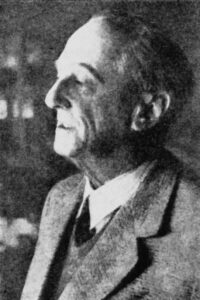
How did the Lwów mathematicians work? Were there seminars in the offices of the university? What issues were they interested in?
Of course, the work of the scientists who made up the Lwów School of Mathematics took place at the university, where they lectured, conducted seminars, and examined students, but their several-hour sessions at the Szkocka Café, at the intersection of Fredro Street and Akademicki Square in Lwów, have become legendary. Banach enjoyed working in the cafeteria to the sounds of live music and among the waiters circulating with trays. If someone wanted to work with him, they had to agree to these conditions. The mathematicians sitting silently for hours on end only briefly engaged in heated discussions, and then someone scribbled something with a pencil on the marble table top. To someone watching from outside, they might have seemed insane, recalled Stanisław Ulam. But that’s how numerous mathematical theorems were made.
Apparently, just as many vanished under the cloths and rags of the cleaning ladies who came to wash tables in the Szkocka Café in the evening.
They did what they had to do. And we will certainly never know how much of the school’s achievements in Lwów were lost in this way. Dean Łomnicki even made an appointment with the owner of the Szkocka Café so that the cleaning ladies would clean the mathematicians’ table only when students sent from the university had copied down everything that was written on it, but it didn’t quite work. It was then that the famous Szkocka Book was born.
A testimony to the enormous contribution of these people to world mathematics…
This book sounds very serious and lofty, doesn’t it? However, it was an ordinary school notebook, bought by Banach’s wife in a stationery store and left in the cafe so that the achievements of subsequent sessions at Szkocka would not be lost to the cleaning ladies. It was common that mathematicians entered into it the tasks they were working on or mathematical puzzles for their colleagues. It also included the promised rewards for solving them, such as: coffee, beer, five beers, dinner in the best Lwów hotel “George” or a fondue in Geneva. The live goose, which Stanisław Mazur promised for solving his task in 1936 became legendary. How difficult it was, is evidenced by the fact that it was solved only 37 years later by the Swedish mathematician Per Enflo. And in Warsaw, he picked up a live goose from Mazur!
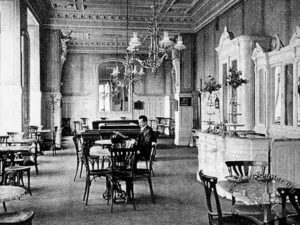
The atmosphere of Lwów was conducive to such achievements, and on top of that, the scientists were very patriotic. At the end of the 1930s, John von Neumann visited Banach in Lwów with a job offer in the West. Why did he refuse?
This is one of the most famous stories related to Stefan Banach, and illustrates his character perfectly. Von Neumann was the envoy of Prof. Norbert Wiener, the father of cybernetics, who had created a scientific dream team in the USA and saw a place for Banach in it. Von Neumann came and handed Banach a check with only the number “1”, and the Polish mathematician was supposed to add any number of zeros for permission to leave. He refused: “It’s not enough to leave Poland.” Mathematics is a transnational and cross-border science, it can be practiced anywhere in the world – of course in the USA for much more money – but Banach did not want to go. He felt at home in Lwów, in an atmosphere that he probably could not recreate in America. Although perhaps a few years later, when Lwów was taken over by the Germans and he was then working as a lice feeder, it is likely that he regretted this decision.
The outbreak of the Second World War brutally closed the period of activity of the Lwów mathematical school. Steinhaus used two pages to list the names of the mathematicians who did not survive the war. What was the fate of the most important representatives of the school?
A large part of the mathematicians who made up the Lwów school were of Jewish origin, so when the war broke out their fate was doubly difficult and their lives in danger. Lwów mathematicians died in September 1939, and again in Katyn; they were among the professors murdered in July 1941, and later they died in ghettos. Stanisław Ulam was lucky, and shortly before the war he left for the USA on a scholarship which saw him going to Los Alamos, NM, to join a group of scientists working on the Manhattan Project, i.e. deeply involved in the race to develop the American atomic bomb before Hitler. After the war, he became the inventor of the many times more dangerous hydrogen bomb that could end the existence of the world. Steinhaus hid under a false name in the vicinity of Jasło, while Mazur tried to stay hidden in Lwów. Banach survived the war by feeding lice at the famous Typhus Research Institute of Prof. Rudolf Weigl, but died shortly after. The Lwów school of mathematics continued under the Soviet occupation until June 1941. The last entry in the Szkocka Book dates from 31 May, after which it ceased to exist. And after the war, those who survived went to different cities. Hugo Steinhaus ended up in Wrocław, where attempts were made to reactivate the working style of the Lwów school, and even the New Szkocka Book was written, but in the end this idea failed. All those people, the specificity of Lwów, that atmosphere, and Banach – it was all gone.
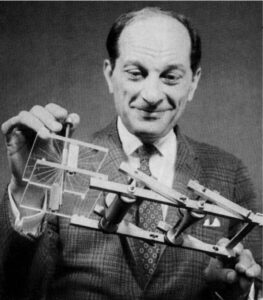
What is the legacy of the Lwów school of mathematics? Did the achievements of the scientists from Lwów turn out to be permanent?
Banach’s name is on the plaque commemorating the most eminent mathematicians at the Museum of Science in Chicago, and is the most frequently cited mathematical name after Euclid. It suffices to look at the first encyclopedia to see how many statements and evidence are permanently connected with the names of the members of the Lwów school. Banach space, Banach-Steinhaus theorem, Banach-Tarski paradox, Mazur-Ulam theorem, Ulam spiral and matrix, Schauder theorem, “introwizor”, i.e. the predecessor of the tomograph, patented by Steinhaus in the USA. This list could be much longer. Their common achievements are functional analysis, which in the 1920s and 1930s became the driving force of mathematics, and today is used in many areas of industry, including aviation and automotive, economics and the military.
Interviewer: Piotr Abryszeński (PhD, employee of the History Research Office of Institute of National Remembrance)
Translation: Alicja Rose & Jessica Sirotin

